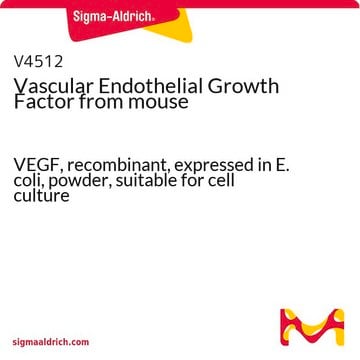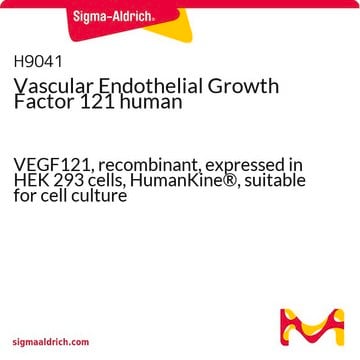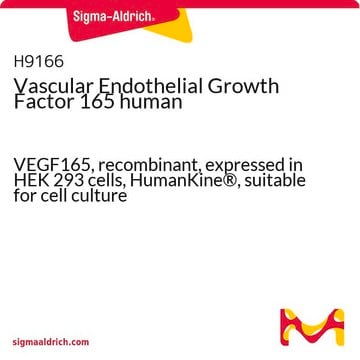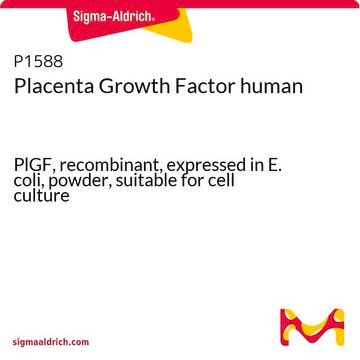V3388
Vascular Endothelial Growth Factor (aa 207-318) human
≥97% (SDS-PAGE), recombinant, expressed in E. coli, lyophilized powder
Synonym(s):
VEGF112, Vasculotropin
About This Item
Recommended Products
biological source
human
Quality Level
recombinant
expressed in E. coli
Assay
≥97% (SDS-PAGE)
form
lyophilized powder
potency
0.75-3.75 ng/mL ED50
mol wt
predicted mol wt ~28 kDa
packaging
pkg of 5 μg
storage condition
avoid repeated freeze/thaw cycles
impurities
<1 EU/μg
UniProt accession no.
storage temp.
−20°C
Gene Information
human ... VEGFA(7422)
Application
Biochem/physiol Actions
Other Notes
Physical form
Analysis Note
Storage Class Code
11 - Combustible Solids
WGK
WGK 3
Flash Point(F)
Not applicable
Flash Point(C)
Not applicable
Personal Protective Equipment
Certificates of Analysis (COA)
Search for Certificates of Analysis (COA) by entering the products Lot/Batch Number. Lot and Batch Numbers can be found on a product’s label following the words ‘Lot’ or ‘Batch’.
Already Own This Product?
Find documentation for the products that you have recently purchased in the Document Library.
Articles
VEGF-A stimulates blood vessel growth via endothelial cell proliferation, migration, and survival during embryonic development.
VEGF-A stimulates blood vessel growth via endothelial cell proliferation, migration, and survival during embryonic development.
VEGF-A stimulates blood vessel growth via endothelial cell proliferation, migration, and survival during embryonic development.
VEGF-A stimulates blood vessel growth via endothelial cell proliferation, migration, and survival during embryonic development.
Our team of scientists has experience in all areas of research including Life Science, Material Science, Chemical Synthesis, Chromatography, Analytical and many others.
Contact Technical Service







